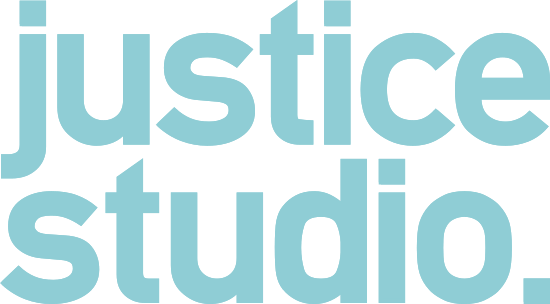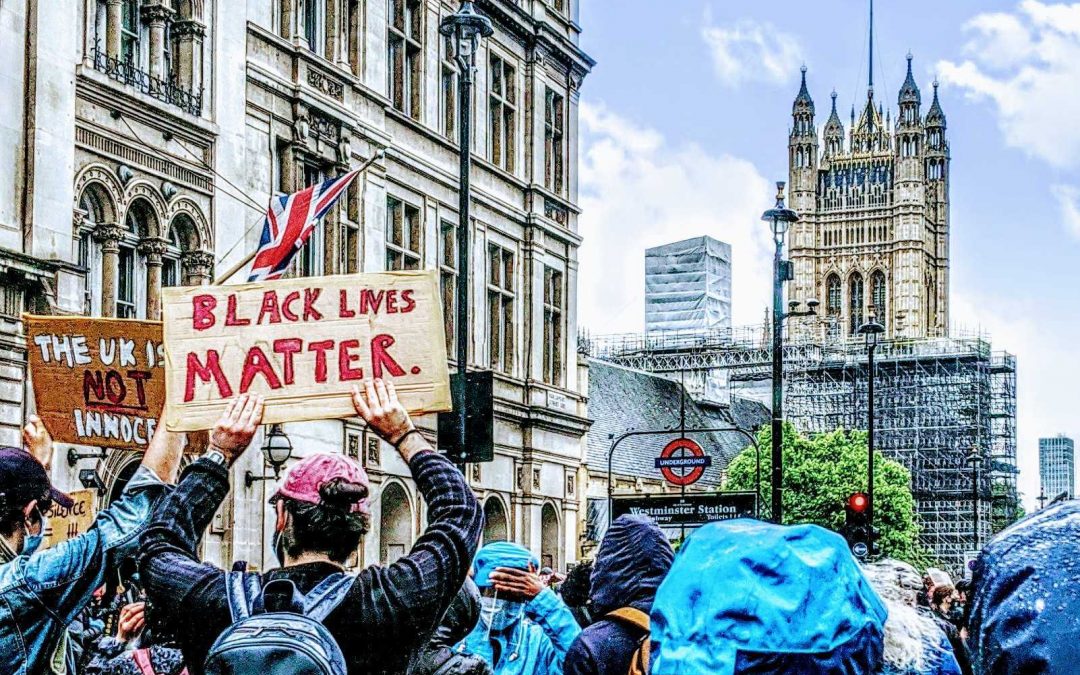In the days following the death of George Floyd, protests against racism have erupted over the globe. These protests move beyond a distain for police brutality into a rightful challenge to white dominated society. Many organisations are being forced to look with fresh eyes on what they have, or haven’t, done so far to prevent racism in their organisations.
Many organisations want to be able to say not just that they are non-racist, but that they are anti-racist. It sounds cool, but what does it mean in practice?
Having dedicated much of our work to increasing social equality and assisting organisations to develop and improve, we have outlined key steps for organisations keen to move from passivity to active change. If your leadership is serious about eliminating racism then read on.
- Be clear about what racism is
We need to stop thinking about racism as a binary thing: to be racist is bad: to not be racist is good. Obviously this is true, but if we are too binary about it then we focus on extreme incidents but ignore a lot of the micro-aggressions in-between. Acknowledging that everyone born in a country where racism exists will not be able to escape from it is a key step. Our white-privileged cultures mean that we have all absorbed messages about what skin colours are good and which are bad from a young age.
2. Get ready to be uncomfortable
Remembering that leaders are duty bound to set the ethical tone from the top and have a huge impact over the culture of an organisation, it is crucial for the leadership team to be committed to this journey.
If your leadership team is predominately white then it is almost certain that you will never have reflected on this whiteness. This means you will not necessarily have confronted your white privilege and the blind spots that come with it. Leaders tend not to be used to being humble, and acknowledging mistakes or blind spots, but that is exactly what you are going to have to get comfortable with if you are truly committed to this journey. At times it is going to feel extremely personal, and may induce visceral feelings of shame and guilt. But that is because it has to be. Get ready to be a better you, and to run a better organisation.
3. Understand how bad it is right now
How can we fix what we do not understand? It is crucial to begin a learning exercise to understand your organisation with fresh eyes. You need to look at what is not always easily seen: where the power lies and how the power structures are supporting or incubating the lived experience of racism and white fragility.
One of the first steps in understanding is finding out from your black staff and other people of colour their experiences. You need to understand the extent to which they feel personally safe, safe within their work, and safe to voice any concerns or issues within the workplace, the extent to which they trust senior leadership, and the extent to which there is racism and bias in your organisation.
This research can be done internally, but it might be more appropriate and effective if outsourced to another agency. Safety and trust are the big indicators here. If there is any doubt about how safe and trusted your staff of colour feel then you might struggle to get them to talk to an internal team. What you do not want to do is cause trauma by the act of uncovering any racism in your organisation.
Coupled with all of this is understanding the dynamics of power in terms of white privilege. If you have a majority white workforce, it is crucial to engage with them to understand what their views are on race and bias. Key outcomes from this understanding exercise is an idea of the extent to which your white staff can acknowledge their white privilege and bias and the extent to which it is affecting the power structures and the culture of your organisation.
4. Look at the full recruitment, retention and exit system
During your process of understanding, look at your full recruitment, retention and exit process. This starts before you even hire people: in the extent to which you are outwardly seen to be inclusive; it continues in how you frame your adverts: where you place them and how much effort you put into targeting black and minority people; it then proceeds through the hiring stage: in terms of your shortlisting criteria and who you shortlist, as well as, hire.
If your black and minority ethnic employees manage to get through the various hoops to getting in to your organisation, it is important to know what roles they are doing and where these roles sit on the pay and seniority levels. You need to know if there is a race glass ceiling is in your organisation, and what and where the blockers are for people of colour as they move through their career in your organisation. Who gets mentored? Who gets encouraged into more senior roles? Has any diversity inclusion training been carried out with your white employees? If so, how often is it done and is it done with new recruits? Have you as an organisation started to have those difficult conversations about race and white privilege? If not, then this is an excellent time to start.
Importantly, think about exit. What is the level of staff retention and turnover among your black and minority ethnic staff? What are their reasons for leaving or absences? There is a wealth of information about employees exiting your organisation that will be crucial to delve into if you want to keep and promote your black and minority ethnic employees.
5. Be prepared to make changes in your Board
If you have a predominately white board then you are in the majority of organisations in the UK: from the private to the public and charitable sector. Despite the legal duty on public institutions, leadership teams continue to drag their feet on increasing colour diversity. Yet board representation is key if you want to take being anti-racist seriously.
Look at the faces of your Board and senior leadership team and be prepared to make brave changes to its composition. As long as you have a majority white board you will be unable to effectively tackle your racial blinds spots, unconsciously affect organisational behaviour, and will be cocooned within a bubble of your white privilege. No matter what you do further down the organisation, if you don’t make changes at the top then you will lose credibility and accountability if your Board is all white.
6. Remember that culture is key
Whilst it may feel like a nice quick win to boost your representation, getting some differently coloured faces into your organisation will not fix a fundamentally racist institution. Never forget the power of culture. We set our culture by tacitly condoning racist behaviour by not confronting it, allowing it to circulate in jokes, stories or “banter,” and by not holding people accountable if they make mistakes, or even worse, if they practice racist bullying or humiliation. If your culture is racially toxic then any new recruits won’t stick around for long.
7. Practice accountability
Your staff will only trust your actions if you demonstrate that you will hold people accountable if they breach inclusive values. It is necessary to have clear monitoring, reporting and investigation channels which are appropriately resourced. This may involve creating a new role or hiring a new member of staff and there should always be a Board member who holds ultimate accountability for this area.
The first thing these individuals should do is examine previous incidents. What has happened to staff that have been accused of racial discrimination? What happened to the accuser? You should have appropriate recording keeping, procedures and monitoring in place for complaints, including an exit process with the opportunity to identify why an individual has left. This process must be accessible and non-threatening for employees to use.
When dealing with grievances, it is key to ensure that they are managed effectively and with integrity. Staff must be trained on diversity and inclusion policies and processes appropriately, starting with an induction when they join the organisation, and then on a regular basis. Ethnic minority staff should be able to access regular supervision for guidance relating to discrimination or abuse. This would ideally be offered externally, from an independent source.
8. Get your paperwork in order
We’ve talked about recruitment and retention, but it’s also time to look at the facts and figures. First, see what data you collect. Look at the ethnic composition of your staff, and how it varies depending on seniority or department. Do the same with pay. Are there equivalent terms, conditions and pay for workers carrying out similar work?
You will find that the results are rarely simple: it’s not as straight forward as black workers holding fewer senior roles than white ones. Gender, sexuality, disability and many other factors may also play a role, which is known as intersectionality. It is important not to oversimplify your results to make life easier, but instead recognise the multiple disadvantages that some of your staff will experience.
Keep the results in mind as you examine your HR policies and procedures. To what extent are they discriminatory? Subjective criteria can lead to subtle discrimination in hiring and promotion. Even the best managers in the world will have unconscious (and conscious!) bias, which will influence the decisions that they make, and how they write a job advert. Establishing objective criteria can help to ensure a fair playing field.
9. Put your money where your mouth is
No, we don’t mean funding Black Lives Matter (although do that if you want!) What we are saying here is really look at your staff pay. Calculate your Ethnicity pay gap, and be prepared to make changes to salaries if you find that you have a large discrepancy between what your white and black/brown employees get paid. It’s nice to make donations but it is hypocritical if your own organisation does not look after its black staff.
Putting your money where your mouth is, also means funding any necessary support structures, diversity focal points or offering other compensation to staff as you work to become anti-racist. Executive sponsors for race and diversity focal points need a budget, investigations into abuses need money, research into understanding your current situation requires money. If you are serious, you need to back up your words with tangible, well-resourced action.
But whatever you do, don’t think you can just hire someone to come in and do everything for you quickly. Sure, get assistance, but with the understanding that any real change means the organisation fully buying in to the process, and all employees and the leadership team being ready to be uncomfortable before it gets better.
Sadly you won’t get a medal at the end of the process, but your organisation will be all the healthier for everyone.
Justice Studio is committed to anti-racism. We are currently evaluating the EHRCs inquiry into racial harassment in higher education and are working with the UK’s DFID on a safeguarding project that reviews and helps organisations to develop action plans to tackle racial and ethnicity bias and promote organisational safeguarding. We hope that this short guide can act as a good starting point for those organisations who are really serious about tackling their white privilege and join us in taking an anti-racist stance. If you want any more information about any of the above, or would like assistance with working through the steps, then please contact our Managing Director Marianne.
Lily Bissett is the Director of Operations at Justice Studio.
Marianne Moore is the Managing Director of Justice Studio.
Featured photo taken by Justice Studio staff at recent demonstrations in London, June 2020.

